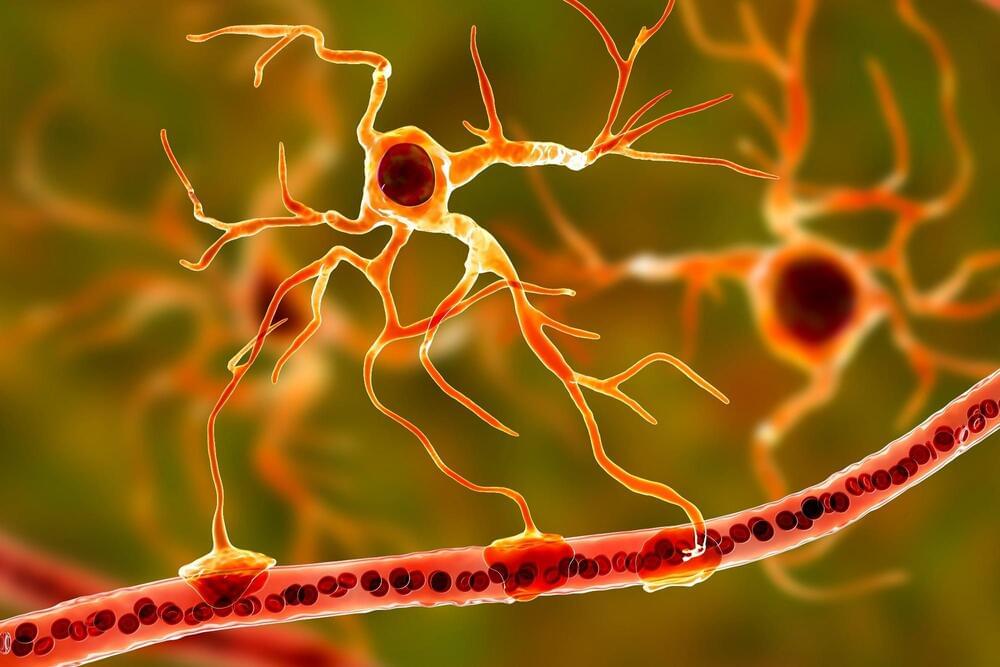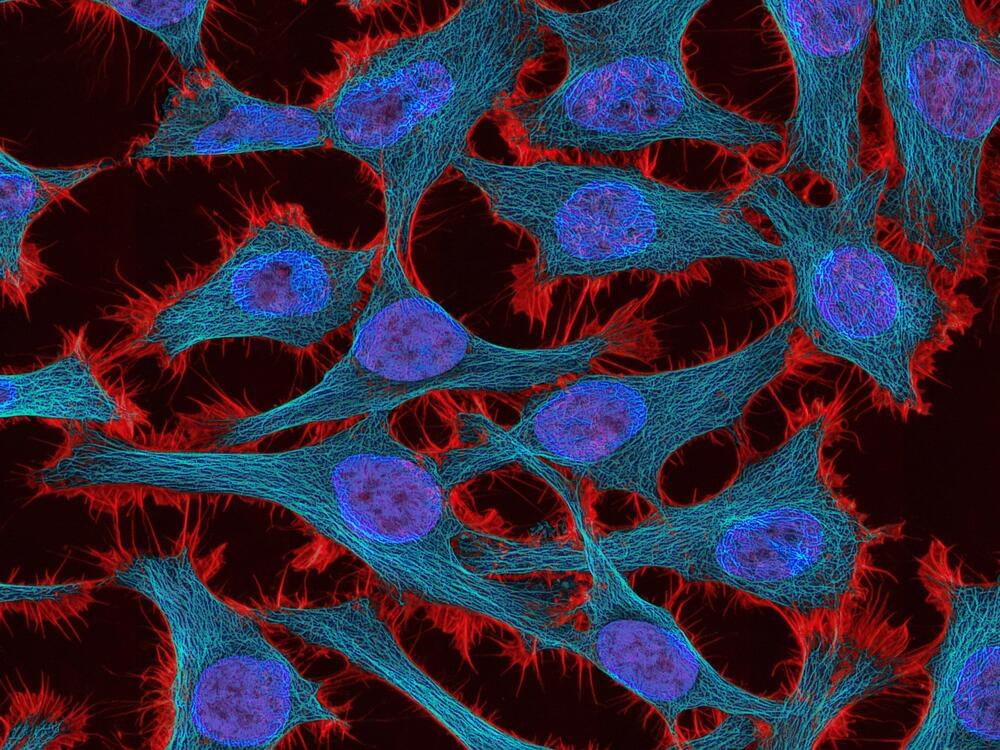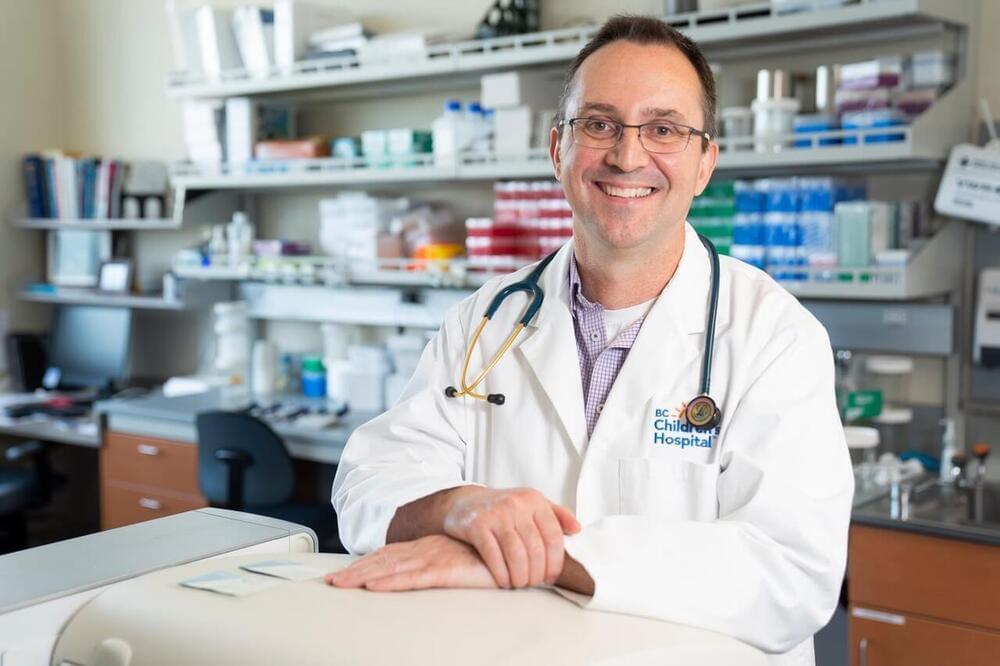June 14 — Bill Maris, Google Ventures chief executive officer, comments on artificial intelligence’s impact on biotech, the prospects for Theranos and the venture capital environment. He speaks with Bloomberg’s Emily Chang from the Bloomberg Technology Conference in San Francisco on “Bloomberg West.”
Category: health – Page 165

Alzheimer’s: Exercise-induced hormone may help reduce plaque
He added the study may lead doctors to try finding medications to mimic the effect of exercise without actually requiring physical activity.
“While this research shows promising results, a lot more research would be needed to show how much of an impact it would make on people with Alzheimer’s and how much would be needed for a preventive effect,” Voci said. “But I would argue that this gives more evidence to the broad spectrum of what exercise can treat. Exercise is medicine.”

Specialized astrocyte subpopulation discovery sheds light on brain health and treatment avenues
In a recent study published in Nature, researchers investigated whether glutamatergic gliotransmission was mediated by specialized astrocytes in the central nervous system.
The role of astrocytes in brain circuitry function, such as swift glutamate release, has been questioned due to inconsistent data and lack of direct evidence. This mechanism, similar to neurons, controls plasticity, excitability, and coordinated activity of synaptic-type networks but also contributes to neuropsychiatric conditions.

Nanotechnology-Boosted Biomaterials for Osteoarthritis
Osteoarthritis (OA) is a prevalent global health concern, posing a significant and increasing public health challenge worldwide. Recently, biomaterials have emerged as a highly promising strategy for OA therapy due to their exceptional physicochemical properties and capacity to regulate pathological processes. However, there is an urgent need for a deeper understanding of the potential therapeutic applications of these biomaterials in the clinical management of diseases, particularly in the treatment of OA. In this comprehensive review, we present an extensive discussion of the current status and future prospects concerning biomaterials for OA… More.
Herein, in this review, we summarize the advanced strategies developed for enhancing OA therapy based on the biomaterials. We conducted a comprehensive literature search using relevant databases such as PubMed, Scopus, and Web of Science. The search was focused on peer-reviewed articles and research papers published within the last ten years (from 2013 to 2023). We utilized specific keywords related to biomaterials”, biomaterials” and “osteoarthritis therapy” to retrieve relevant studies. First, we provide an overview of the pathophysiology of OA and the limitations of current treatment options. Second, we explore the various types of biomaterials which have been used for OA therapy, including nanoparticles, nanofibers, and nanocomposites. Third, we highlight the advantages and challenges associated with the use of biomaterials in OA therapy, such as toxicity, biodegradation, and regulatory issues. Finally, advanced biomaterials-based OA therapies with their potential for clinical translation and emerging biomaterials directions for OA therapy are discussed.
Characteristics of Biomaterials
Nanotechnology-boosted biomaterials have attracted considerable attention in recent years as promising candidates for revolutionizing the field of therapeutics.12,13 These materials combine the unique properties of nanotechnology with the versatility and biocompatibility of biomaterials, offering numerous advantages over existing therapeutic approaches. Nanotechnology enables the precise engineering of biomaterials at the nanoscale, allowing for the encapsulation and controlled release of therapeutic agents, such as drugs and growth factors.14–17 This feature facilitates targeted and sustained drug delivery to specific sites within the body, reducing systemic side effects and enhancing treatment efficacy. In the context of OA, this targeted drug delivery can be utilized to deliver anti-inflammatory agents or disease-modifying drugs directly to affected joint tissues, promoting tissue repair and alleviating symptoms. Furthermore, biomaterials can be designed to mimic the native tissue environment, thereby enhancing their biocompatibility and reducing the risk of adverse reactions or immune responses.18 This characteristic is crucial for successful integration and long-term functionality of biomaterials in biomedical applications. Moreover, nanomaterials can facilitate tissue regeneration by stimulating cellular responses and promoting tissue growth.19 In the context of OA, biomaterials can assist in cartilage repair and regeneration, potentially slowing down disease progression and improving joint function.3 In addition, nanotechnology allows for the customization of biomaterials with a wide range of physical, chemical, and biological properties.13 This flexibility enables the development of multifunctional biomaterials that can simultaneously perform multiple tasks, such as drug delivery, imaging, and tissue regeneration. These advantages collectively contribute to their potential as innovative solutions in addressing various biomedical challenges and improving patient outcomes. In this section, we will discuss some of the key properties of biomaterials and their impact on OA treatment.

Scientists use video games to measure the eye-brain-body connection
Video games could give ophthalmologists an easy window not into the soul, but into eye health and the eye-brain-body connection — the three-way reciprocal communication that influences our actions.
“Infusing science into games is like sneaking broccoli into ice cream,” said Khizer Khaderi, MD, a clinical associate professor of ophthalmology. “It removes the resistance to do something that may not be viewed as fun, such as eating vegetables.” Or in this case, evaluating your vision health.
In a Stanford Medicine-led study, researchers employed video games to evaluate participants’ field of vision and visual stamina, their ability to distinguish contrast, and other factors that can indicate common eye diseases.

Exercise-induced hormone irisin may reduce Alzheimer’s disease plaque and tangle pathology in the brain
Researchers who previously developed the first 3D human cell culture models of Alzheimer’s disease (AD) that displays two major hallmarks of the condition—the generation of amyloid beta deposits followed by tau tangles—have now used their model to investigate whether the exercise-induced muscle hormone irisin affects amyloid beta pathology.
As reported in the journal Neuron, the Massachusetts General Hospital (MGH)–led team has uncovered promising results suggesting that irisin-based therapies might help combat AD.
Physical exercise has been shown to reduce amyloid beta deposits in various mouse models of AD, but the mechanisms involved have remained a mystery.
Scientists grow human kidneys inside pigs using stem cells
For the first time, scientists produced human kidneys out of chimeric embryos containing a mix of pig cells and human stem cells. The same technique can be used to produce heart and pancreas.
A team of Chinese researchers has successfully grown early-stage developing human kidneys into female pigs using chimeric embryos.
“This is the first time a solid human organ has been grown inside an animal species other than humans,” Liangxue Lai, senior study author and a biologist at the Guangzhou Institutes of Biomedicine and Health, told Interesting Engineering.

New test shows promise for detecting hard-to-find cervical cancers
In findings with potentially important implications for cervical cancer screening, scientists at the Montefiore Einstein Cancer Center (MECC) have developed a test for detecting a type of cervical cancer that Pap tests often miss. The findings published online today in the JNCI: Journal of the National Cancer Institute.
“Our novel test appears sensitive for detecting cervical adenocarcinoma [ADC]—which now accounts for up to 25% of cervical cancer cases—as well as its precursor lesions, adenocarcinoma in situ [AIS], that often develop into ADCs,” said Howard Strickler, M.D., M.P.H., co-senior and corresponding author of the JNCI paper and a member of MECC.
“Because ADCs are often missed by current screening methods, they have higher mortality rates than the more common cervical squamous cell cancer,” Dr. Strickler added. “Our goal is to catch the disease early, before it develops into cancer.” Dr. Strickler is also professor and head of the division of epidemiology and the Harold and Muriel Block Chair in Epidemiology and Population Health at Albert Einstein College of Medicine.

Gut Microbiome Flaws Linked to Allergies from Food to Eczema
A study has linked the development in kids of any of food allergy, asthma, eczema and rhinitis to a common factor – an unbalanced gut microbiome.
Researchers have long been intrigued by the gut microbiome in the development of allergic diseases. But this Canadian study is unique in identifying a common origin in infancy across the four separate allergic diseases. As well, it explored the composition of gut bacteria in children before and following allergic sensitization.
As each allergic disease has a separate list of symptoms, they are usually studied on their own. “But when you look at what is going wrong at a cellular level, they actually have a lot in common,” notes Dr. Charisse Petersen, co-senior author and a researcher at BC Children’s Hospital Research Institute and BC Children’s Hospital.